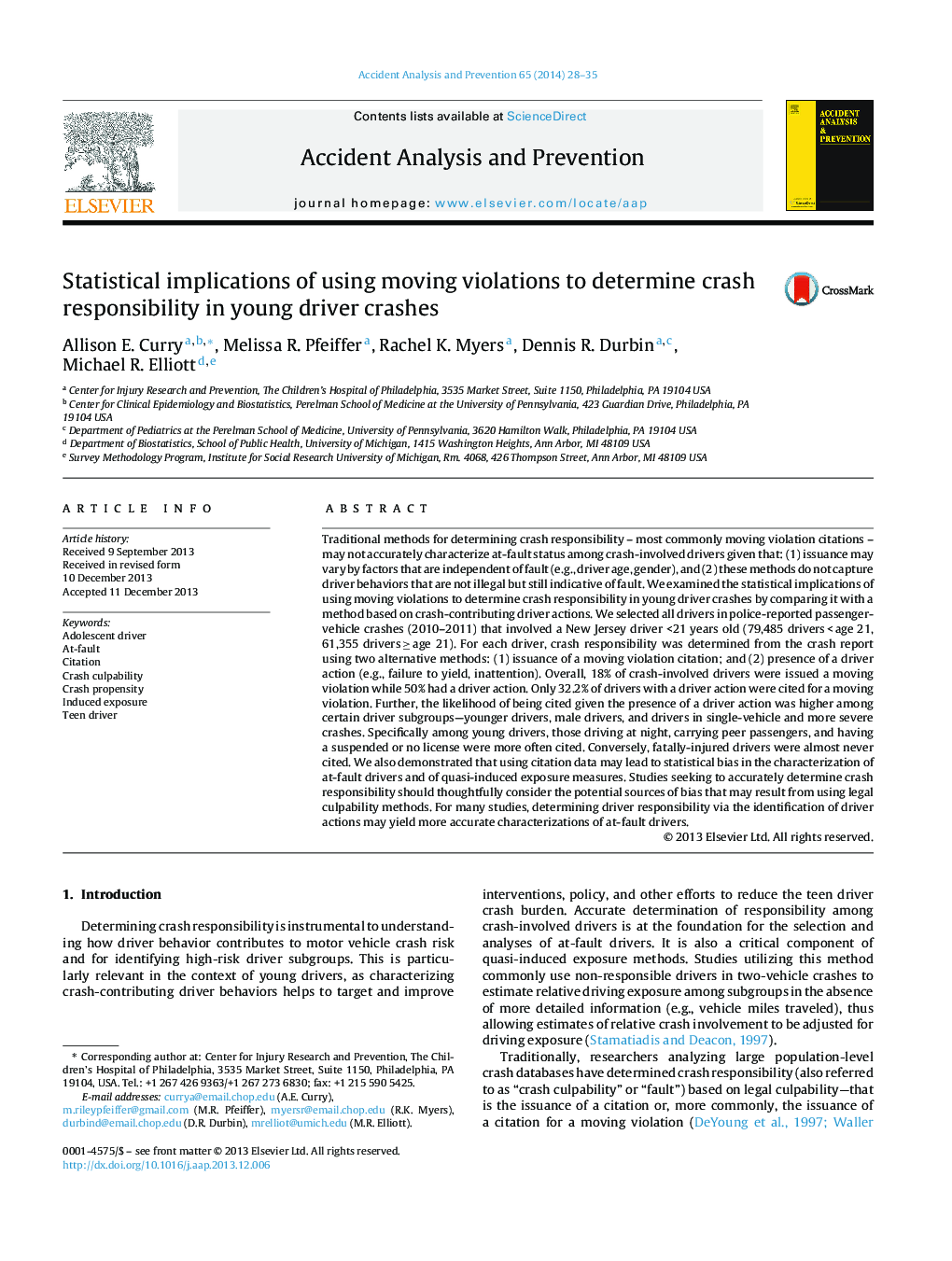| Article ID | Journal | Published Year | Pages | File Type |
|---|---|---|---|---|
| 6965965 | Accident Analysis & Prevention | 2014 | 8 Pages |
Abstract
Traditional methods for determining crash responsibility - most commonly moving violation citations - may not accurately characterize at-fault status among crash-involved drivers given that: (1) issuance may vary by factors that are independent of fault (e.g., driver age, gender), and (2) these methods do not capture driver behaviors that are not illegal but still indicative of fault. We examined the statistical implications of using moving violations to determine crash responsibility in young driver crashes by comparing it with a method based on crash-contributing driver actions. We selected all drivers in police-reported passenger-vehicle crashes (2010-2011) that involved a New Jersey driver <21 years old (79,485 drivers < age 21, 61,355 drivers â¥Â age 21). For each driver, crash responsibility was determined from the crash report using two alternative methods: (1) issuance of a moving violation citation; and (2) presence of a driver action (e.g., failure to yield, inattention). Overall, 18% of crash-involved drivers were issued a moving violation while 50% had a driver action. Only 32.2% of drivers with a driver action were cited for a moving violation. Further, the likelihood of being cited given the presence of a driver action was higher among certain driver subgroups-younger drivers, male drivers, and drivers in single-vehicle and more severe crashes. Specifically among young drivers, those driving at night, carrying peer passengers, and having a suspended or no license were more often cited. Conversely, fatally-injured drivers were almost never cited. We also demonstrated that using citation data may lead to statistical bias in the characterization of at-fault drivers and of quasi-induced exposure measures. Studies seeking to accurately determine crash responsibility should thoughtfully consider the potential sources of bias that may result from using legal culpability methods. For many studies, determining driver responsibility via the identification of driver actions may yield more accurate characterizations of at-fault drivers.
Related Topics
Physical Sciences and Engineering
Chemical Engineering
Chemical Health and Safety
Authors
Allison E. Curry, Melissa R. Pfeiffer, Rachel K. Myers, Dennis R. Durbin, Michael R. Elliott,
